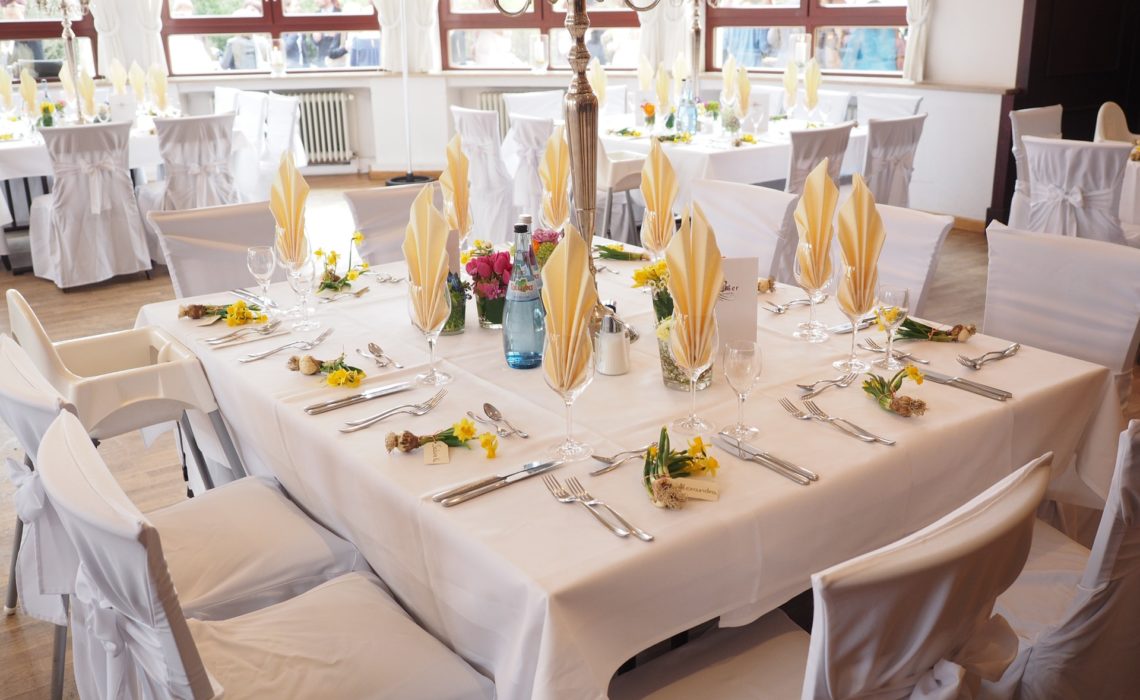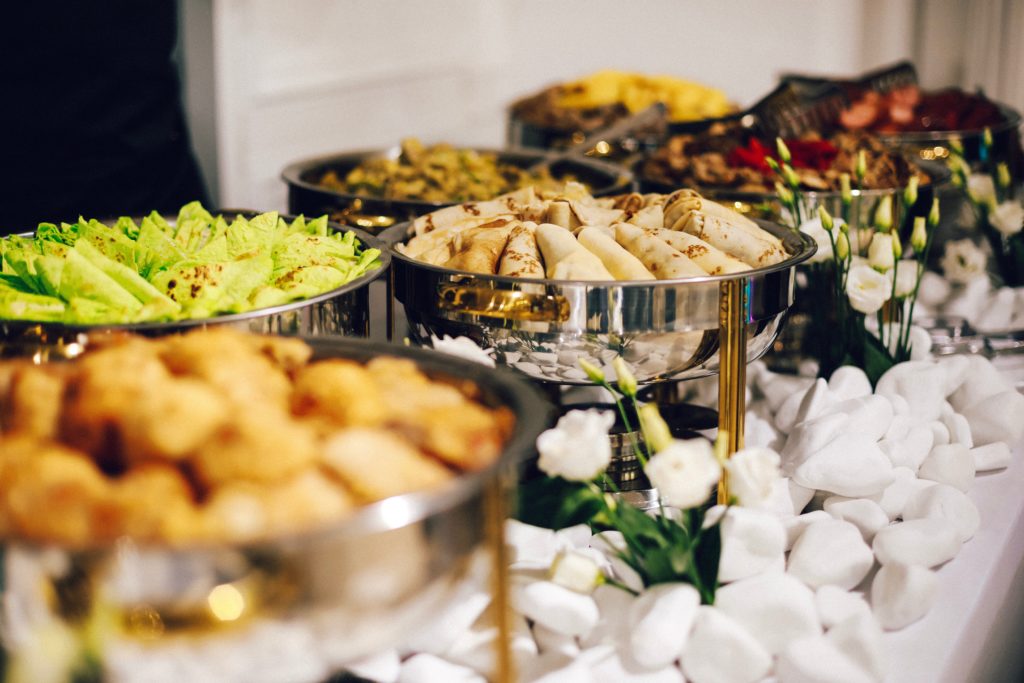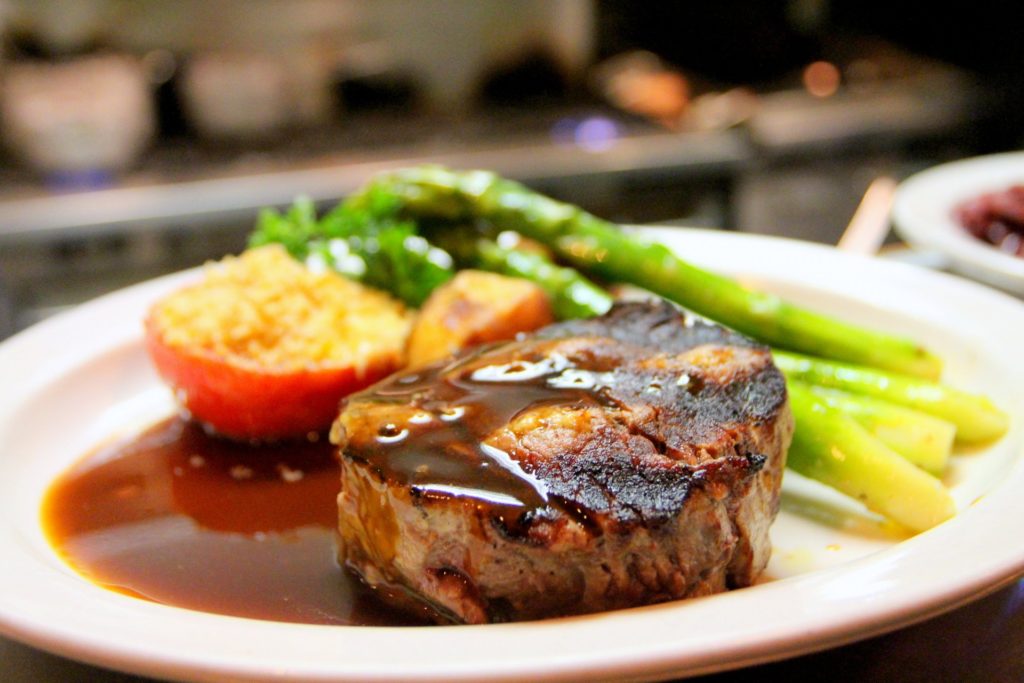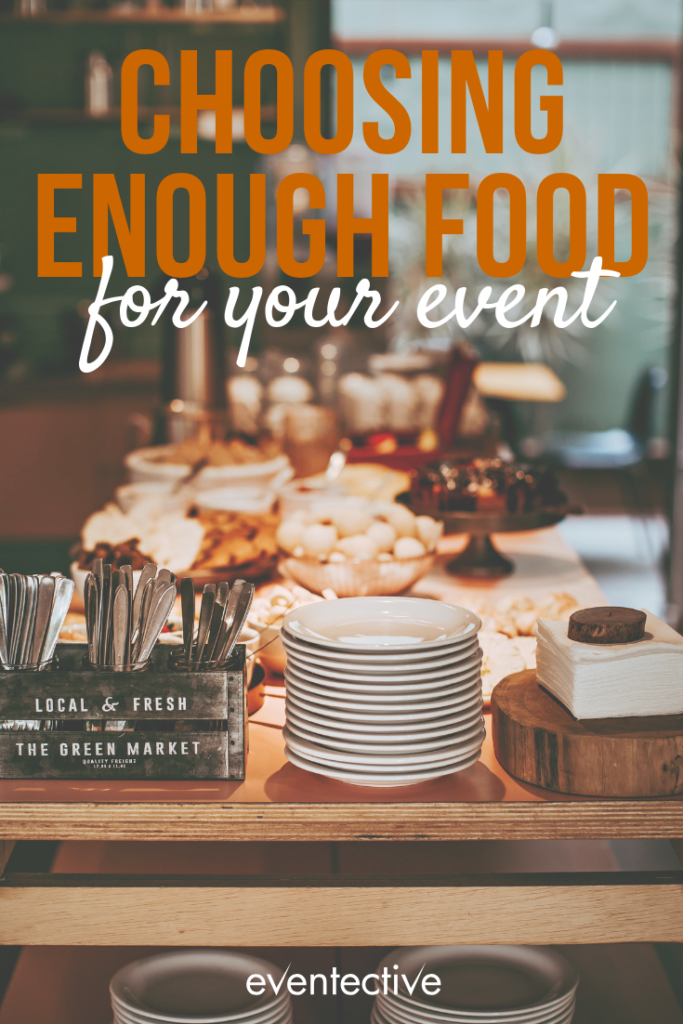
Hospitality is critical at any event—attendees that feel comfortable and appreciated are more engaged, and share positive reviews for future events. Providing food is a long-standing hospitality tradition, dating back to Ancient Greece. Needless to say, if you want your guests to feel comfortable, food is the way to go.
But you probably already knew that. After all, when was the last time you attended an event that didn’t serve food? Corporate meetings provide coffee and muffins, weddings offer cocktail hour before the formal meal, and your BFF probably asks if you’re hungry whenever you visit. Food is a staple at any social event.
So how much food is enough? Offering too little food can leave guests underwhelmed and hungry. But providing too much can stress your budget and give a sometimes-harmful impression of lavishness. There are three main dining options: hors d’oeuvres, buffet style, and plated meals. Below, we explain which to choose based on the details of your event.
Choose Hors D’oeuvres…

…For Networking
Whether servers are walking around with full plates, or there is a table offering light refreshments, hors d’oeuvres are perfect for networking events. The bite-sized morsels are quick to eat, so attendees don’t need to interrupt the flow of conversation. And because networking events don’t offer traditional table seating, hors d’oeuvres are easy to eat without making a mess.
…During Off Hours
Even if your event isn’t scheduled during typical meal hours, food is still expected. Hors d’oeuvres are perfect for snacking between mealtimes, when guests aren’t terribly hungry. Keep the refreshments light if your event is scheduled before a typical meal time—like a brunch or cocktail hour. That way, guests won’t spoil their next meal. But a post-meal event can offer richer snacks, especially if alcohol is also available.
…For Short Events
Is your event under two hours? Or are guests only staying for a short time, like during a job fair or art exhibit? Finger foods are your solution! Because attendees aren’t staying long, there’s no need for wait staff—simply set up a table with the food and drink, and keep refreshing it as the day goes on.
Bonus Tip: Don’t put out all your food at once. Keep at least half set aside to refill plates throughout the event.
Choose Buffet Style…

…For Flexibility
If your event is during mealtime, you should absolutely provide a meal for your guests. Buffet style lets your guests fill up on the foods they want, without the restriction of a plated meal. Plus, buffets give you the option to offer food for the duration of the event—so guests can choose to eat when want, and not when it’s scheduled.
…For Long Events
Is your event scheduled for more than four hours? If so, your guests will start to get hungry and restless. Offering a buffet discourages them from leaving to find food, and gives them the freedom to eat when they want to. Plus, buffets maintain proper food temperature for long periods of time, so no one gets a cold meal.
…For Casual Events
Because guests are serving themselves, there’s a greater risk for spills. So only plan a buffet meal if guests aren’t in their formal or black tie clothing. Business casual is a little bit of a gray area—so also consider the venue. Is it a fancy venue? Then forgo the buffet. But if the venue warrants a more casual atmosphere, buffet style is perfect.
Choose a Plated Meal…

…For a Main Event
If you have a scheduled speaker or main event, a plated meal ensures that everyone will be seated and present. For performances, like live music, guests can eat while the event is happening. But for a speaker or auction, plan to start after the meal is over and coffee is being served. The crowd won’t be as engaged when eating, and you should give your speaker a chance to eat, too.
…For a Set Meal Time
If the invitation was for a 7:00 p.m. dinner, then you should absolutely serve a meal at that time. When guests are asked to be prompt and present, a plated meal is expected. Do request that guests arrive 30-45 minutes early to find their seats and chat with colleagues before the food is served, though.
Bonus Tip: Include the menu with the invitation, especially if guests have their choice of protein.
…For a Black Tie Event
Remember—guests don’t want to spill food on their formal evening wear, so don’t ask them to handle food or carry it around the venue. Instead, bring it to them. Not only is a catered meal traditionally consider proper etiquette at a formal event, but you also decrease the chance of spills, keeping your guests happy and clean.
Conclusion

Once you’ve chosen the best dining option for your event, your caterer can help determine quantities based on head count. The number of plated meals will, of course reflect the number of RSVPs—with a few extra, just in case. But hor d’oeuvres and the buffet are based on number of servings. For example, if you have 100 guests, you will choose a combination of appetizers or entrees that, when combined, provide over 100 servings. You don’t need one serving of everything for everyone—just enough for guests to have 2-3 servings of food. That, coupled with choosing the right dining option, will result in happy guests and proper hospitality.
Have you attended an event recently where there was no food served? Were you disappointed? Share your experience in the comments below!

